In the dynamic and multifaceted realm of food product marketing, the role of packaging extends well beyond mere aesthetic appeal. It is intriguing to observe how seemingly mundane elements like paper packaging can exert a substantial influence on consumer choices. Empirical studies have elucidated that approximately 45% of consumers are inclined to make purchasing decisions influenced by the design of the packaging. Envision perambulating through a supermarket, where the inviting warm tones of a sandwich enveloped in paper packaging or the authentic allure of an artisan loaf encased in a rustic paper bag captivate your attention. This effect transcends mere visual pleasure; paper packaging, often lauded for its environmental sustainability, also serves as a potent symbol of a brand’s dedication to eco-conscious practices and displays important information.
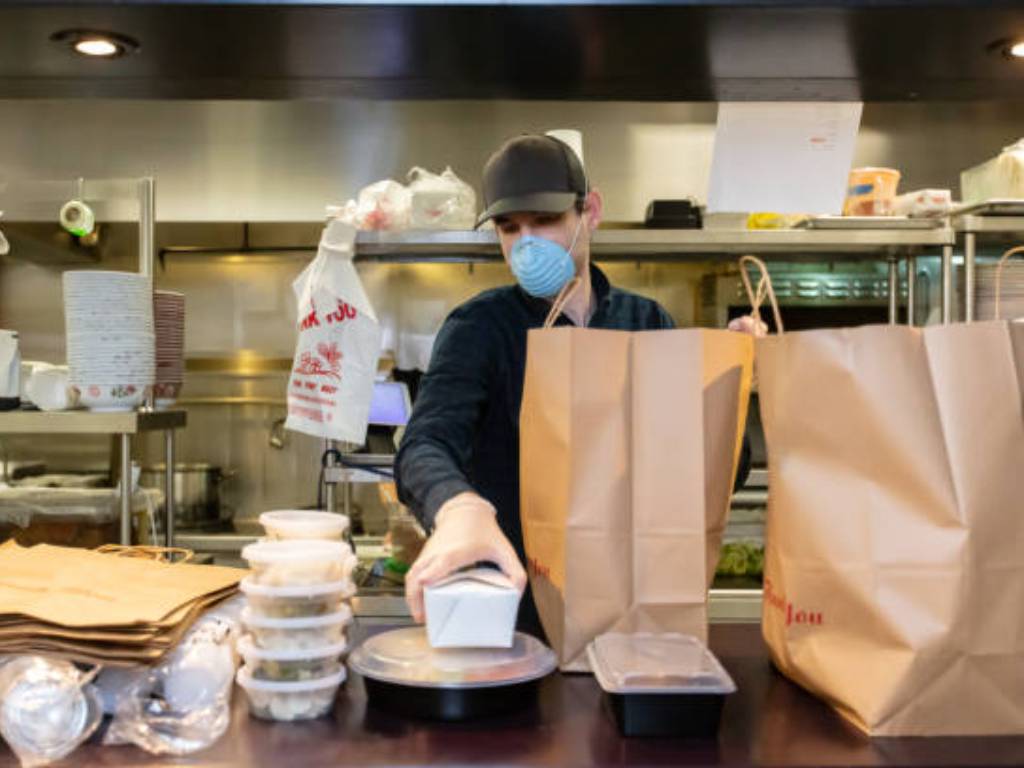
This aspect is pivotal in an era where a significant proportion of consumers, about 60%, exhibit a preference for packaging solutions that are environmentally benign. Thus, the significance of the packaging material, particularly paper, cannot be understated as it harmoniously amalgamates functionality, aesthetic appeal, and an element of environmental responsibility. However, paper represents merely a fragment of the broader spectrum. Our exploration will further extend to a diverse range of materials employed in food packaging, each offering a vital role in shaping our daily interactions with food products in novel and innovative ways.
Types of Food Packaging Materials
In the realm of food packaging, an in-depth comprehension of the diverse types of materials utilized is paramount, as it significantly influences the safety and integrity of our consumable products. The spectrum of these materials is as extensive as the plethora of food items they safeguard. Ranging from the ubiquitous corrugated fiberboard cartons to advanced biodegradable polymers, each category of material fulfills a crucial function in ensuring food safety, maintaining product freshness, and imparting essential information to the end consumers. Shall we delve into a more detailed examination?
Paper and Cardboard Packaging
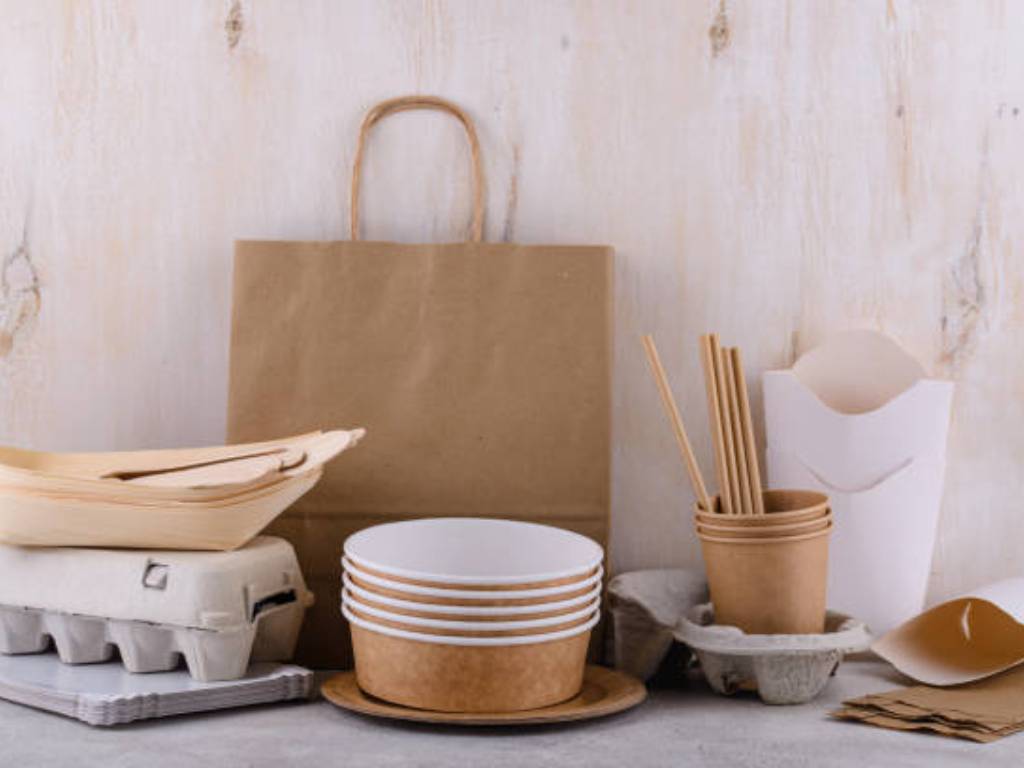
In food packaging, paper and cardboard solutions stand out as exemplary, offering an unparalleled amalgamation of functional efficiency and aesthetic allure. Let us examine some quintessential applications in everyday scenarios. Within the fast-paced environment of fast-food establishments, meals are routinely presented in paper-based, single-use containers. These containers are not merely a testament to convenience and hygiene, but they also endorse ease of disposal and environmental considerations. In the context of bakeries, the ubiquitous presence of freshly baked goods ensconced in brown kraft paper bags transcends traditional practices. This choice is not solely rooted in convention but is also a strategic decision to permit the bakery items to ‘breathe’, thereby preserving their freshness and mitigating moisture accumulation. In the domain of coffee houses, the prevalent utilization of paper cups is noteworthy, not only for their user-friendly attributes but increasingly due to their enhanced recyclability and reduced environmental footprint.
| Type of Paper Packaging | Description | Common Uses |
| Kraft Paper | Strong and durable, ideal for heavy items. | Grocery bags, bakery product packaging, coffee bean bags. |
| Greaseproof Paper | Treated to resist grease and oil. | Fast food wrapping (burgers, fries), fatty food packaging. |
| Parchment Paper | Heat-resistant and non-stick. | Baking (lining trays), wrapping baked goods. |
| Corrugated Cardboard | Fluted cardboard sheet between two liners offers protection and strength. | Pizza boxes, transport boxes for various food products. |
| Paperboard/Cardboard | Thicker, more durable paper material. | Cereal boxes, frozen food packaging, beverage cartons. |
| Coated Paper | Coated with plastic or wax for added durability and resistance to water and oil. | Packaging for products requires moisture resistance. |
The merits of paper packaging in the food industry are considerable and multifaceted. Firstly, its inherent lightweight yet robust nature renders it apt for a wide array of product types, from lightweight snacks to more substantial items. This versatility ensures that paper packaging remains a preferred choice across diverse market segments. Secondly, its status as one of the most recyclable materials positions it squarely within the sphere of sustainable packaging solutions, resonating strongly with the escalating consumer predilection for environmentally responsible practices. Furthermore, the potential of paper for bespoke customization is vast. Envision the plethora of brand logos, engaging slogans, and vivid graphic designs frequently observed adorning paper packages. This not only significantly bolsters brand identity but also markedly enhances consumer interaction and experience. Such attributes make paper packaging an indispensable tool in the marketing arsenal of food products, marrying practicality with aesthetic appeal and environmental stewardship.
Plastic in Food Packaging
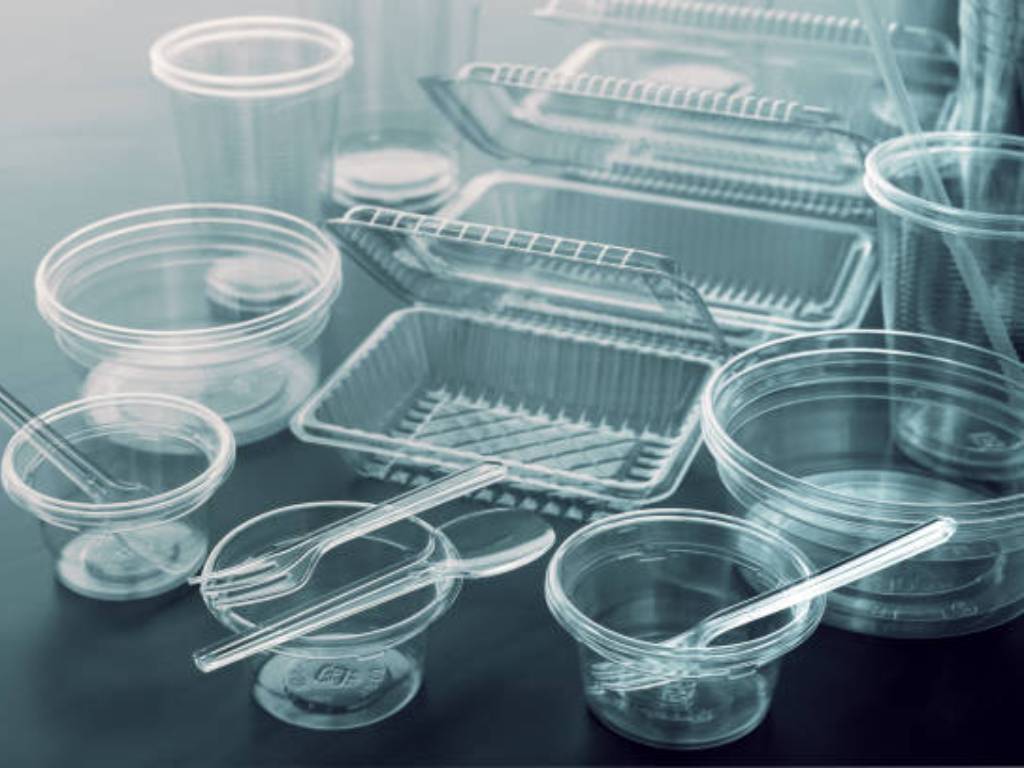
Plastic food packaging, including flexible pouches, constitutes an omnipresent element in the contemporary food industry, primarily due to its adaptability and a range of practical attributes. It finds application in an extensive variety of contexts, from maintaining the freshness of perishable produce like fruits and vegetables to facilitating the convenience of ready-to-eat microwaveable meals. The benefits of utilizing plastic in food packaging, such as its low cost, are manifold and significant:
- Durability: Plastic packaging, distinguished by its exceptional resilience, excels in enduring the challenges of handling and transportation, significantly mitigating the likelihood of compromise to the integrity of the enclosed food products.
- Lightweight Nature: The intrinsic low density of plastic confers a notable benefit, as it reduces logistical expenditures and aids in decreasing energy utilization throughout the distribution process.
- Sealing Capability: A salient attribute of plastic packaging is its exemplary sealing efficacy. This feature is crucial in maintaining the freshness of food items, efficaciously prolonging their consumable life and curtailing food spoilage.
- Transparency: The transparency of select plastic materials affords consumers the opportunity to visually evaluate the products before purchasing, an aspect frequently instrumental in shaping consumer choices.
- Cost-Effectiveness: From a production standpoint, plastic packaging often emerges as a cost-efficient alternative relative to other materials, thus establishing it as an economically prudent selection for numerous food industry enterprise.
Plastic food packaging can be classified into various types, each suited for different applications:
| Type of Plastic Packaging | Characteristics | Common Uses |
| PET (Polyethylene Terephthalate) | Clear, strong, and lightweight. | Bottled drinks, salad containers. |
| HDPE (High-Density Polyethylene) | Durable, stiff, with good moisture barrier properties. | Milk jugs, yogurt tubs. |
| PVC (Polyvinyl Chloride) | Flexible and with good clarity. | Cling film, bottles of oil and sauces. |
| LDPE (Low-Density Polyethylene) | Flexible, transparent, with good moisture resistance. | Squeeze bottles, food storage bags. |
| PP (Polypropylene) | Heat resistant, strong, with a high melting point. | Microwaveable meal trays, snack bags. |
| PS (Polystyrene) | Lightweight, with good insulation properties. | Disposable cutlery, yogurt pots, egg cartons. |
Glass Containers
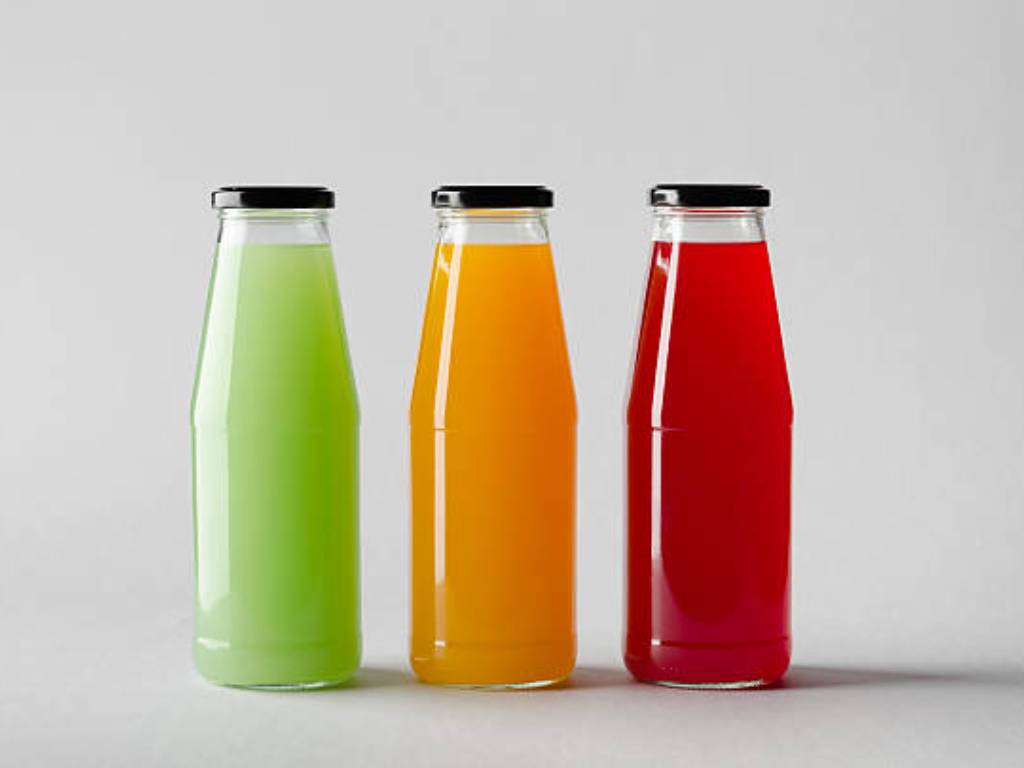
Glass food packaging, distinguished by its sophistication and functional prowess, is highly favored across multiple sectors within the food industry. It is particularly esteemed for preserving the flavor and integrity of beverages and perishable goods. This material’s chemical inertness is a prized attribute, ensuring zero interaction with its contents and thus safeguarding the original flavor and quality of the food. The inherent transparency of glass not only facilitates effortless product visibility, thereby assisting in consumer decision-making, but also imbues the packaging with a sense of aesthetic refinement and a perception of luxury and an air of luxury. Furthermore, the capacity of glass to be recycled ad infinitum, without any degradation in purity or quality, solidifies its status as an eco-friendly packaging alternative relative to other materials.
From a health and safety perspective, glass stands out as a non-toxic option, eliminating concerns regarding chemical leaching into the food products. This ensemble of advantages positions glass packaging as an ideal solution for an array of products. These range from condiments like jams and pickles in crystal-clear glass jars to various beverages housed in tinted glass that provides UV protection. The scope extends to high-end culinary utensils and ornamental bottles crafted from specialized glass types such as borosilicate and tempered glass. These varieties are celebrated for their enhanced durability and superior safety characteristics, making them indispensable in settings that demand both elegance and functional resilience.
Different types of glass packaging cater to various needs in the food industry:
| Type of Glass Packaging | Characteristics | Common Uses |
| Clear Glass | Completely transparent, showcases product. | Jams, honey, pickles, beverages. |
| Colored Glass | Tinted, offers UV protection. | Beer, wine, olive oil. |
| Borosilicate Glass | Highly resistant to thermal shock. | High-end cookware, storage containers. |
| Tempered Glass | Strengthened, more durable than regular glass. | Storage containers, drinkware. |
| Laminated Glass | Multi-layered, offers enhanced safety. | Premium packaging, decorative bottles. |
Metal Packaging Solutions
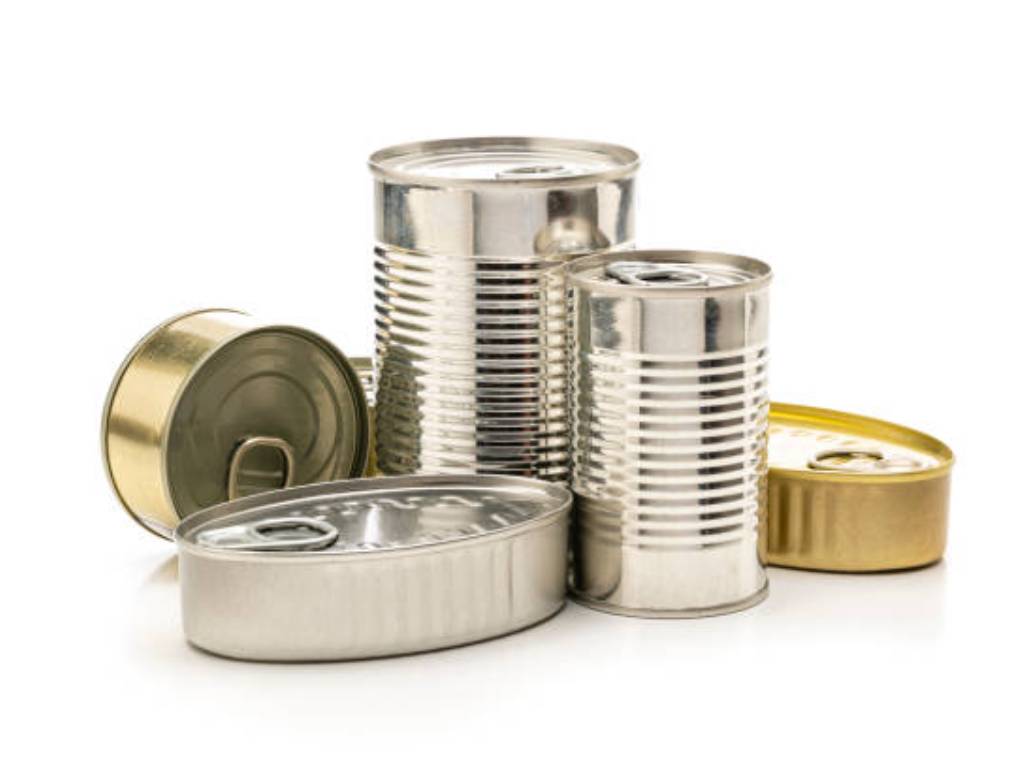
Metal food packaging, notably metal cans, constitutes a fundamental pillar in the packaging industry, acclaimed for its robustness and exceptional protective attributes. It plays a pivotal role, especially in contexts where formidable barrier defense against external elements like air, moisture, and light is crucial. This form of packaging is extensively utilized for its efficacy in maintaining the freshness of a wide array of food products and notably extending their shelf life. For instance, aluminum cans have become a staple in the beverage sector, prized for their lightweight composition coupled with formidable resistance to corrosion. This makes them supremely suited for carbonated drinks and beers. Conversely, steel cans emerge as the preferred option for a broad spectrum of canned foods, encompassing vegetables, fruits, soups, and meats. They offer unparalleled protection and significantly prolong the shelf life of their contents.
One of the most salient features of metal packaging is its impressive sustainability credentials. Materials such as aluminum and steel boast the capacity for infinite recyclability without any compromise in their quality, markedly diminishing their environmental footprint and the consumption of natural resources. Additionally, the inherent durability of metal packaging is instrumental in ensuring the secure and efficient transportation of food products across extensive distances, thereby reinforcing its indispensability in global food distribution networks.
Here’s a breakdown of the different types of metal packaging commonly used in the food industry:
| Type of Metal Packaging | Characteristics | Common Uses |
| Aluminum Cans | Lightweight, corrosion-resistant, and recyclable. | Beverages like sodas and beers. |
| Steel/Tinplate Cans | Strong, with a high resistance to heat and pressure. | Canned vegetables, fruits, meats, soups. |
| Aluminum Foil | Flexible, heat-resistant, and moisture-resistant. | Wrapping foods, snack packets, baking. |
| Laminated Metal Foils | Layers of metal with plastic or paper for added strength. | High-end snack packaging, pet foods. |
| Aerosol Cans | Pressurized, made of aluminum or steel. | Whipped cream, cooking sprays. |
Ceramics

In the realm of culinary packaging, ceramic materials, though not prevalently utilized, occupy a distinguished niche, particularly in the sectors of high-end and artisanal food commodities. The quintessential application of ceramic packaging is observed in the encasement of luxury consumables, encompassing a range of exquisite items such as gourmet cheeses, handcrafted chocolates, and superior grades of coffees and teas. The utilization of ceramics in packaging these products is not merely functional but adds an element of sophistication and timeless elegance. This enhances the overall perceived value of the products, rendering them particularly appealing for gifting purposes or as representation of high-value merchandise.
| Type of Ceramic Packaging | Characteristics | Common Uses |
| Porcelain | Fine, translucent, and often high-fired for strength. | Luxury food items, high-end condiments. |
| Stoneware | Durable, opaque, and rustic in appearance. | Artisanal cheeses, gourmet chocolates. |
| Earthenware | Thicker, less dense, and often glazed for protection. | Handcrafted food items, specialty teas. |
| Bone China | Made with bone ash, thin, and elegant. | Premium teas, luxury food gift sets. |
| Terracotta | Porous, often used unglazed for baking. | Bread baking, traditional food storage. |
One of the paramount advantages of ceramic packaging is its chemically inert nature, which guarantees that there is no deleterious interaction with the contents, thereby preserving both the flavor profile and safety of the food items. In addition to its non-reactive properties, ceramics are renowned for their durability, reusability, and heat resistance. These attributes not only align with the burgeoning trends in sustainable packaging solutions but also offer substantial practical advantages. The combination of aesthetic allure and functional practicality positions ceramic packaging as a preferred choice for the encasement of specialty products, even though it represents a more specialized segment within the expansive food packaging industry.
What are the Health and Safety Considerations With Different Food Packaging Materials?
Determining the safety of food packaging materials necessitates a comprehensive evaluation of various elements, encompassing the material’s composition, its propensity for chemical migration, and adherence to established regulatory frameworks.
- Material Composition: The cornerstone of safety resides in the intrinsic nature of the packaging material. Substances such as glass and stainless steel are ubiquitously recognized for their safety, attributed to their chemical inertness, which ensures no interaction with the food or beverages they encase. Glass, for instance, is devoid of any risk pertaining to the transference of chemicals into foodstuffs, thereby making it a preferred choice for an array of food products.
- Food-Grade Plastics: The realm of plastics in food safety is not monolithic. Only those designated as ‘food-grade’ are sanctioned for food contact, having undergone rigorous scrutiny to verify their innocuousness, particularly regarding the absence of deleterious substances that might migrate into food under variable thermal conditions. Polyethylene terephthalate (PET), prevalent in water bottle production, exemplifies a safe choice, whereas plastics containing Bisphenol A (BPA) have engendered health concerns, leading to their diminished use in food packaging.
- Regulatory Compliance: Globally, the regulation of food packaging materials is stringent, ensuring public health safety. In the United States, for instance, the Food and Drug Administration (FDA) oversees the regulation of substances in contact with food, mandating compliance with rigorous standards. The European Union’s Regulation (EC) No 1935/2004 is another paradigm, requiring that materials do not impart substances into food at levels detrimental to human health.
- Leaching Potential: A pivotal safety aspect is the potential migration of substances from packaging into food, especially critical with acidic edibles that may provoke chemical leaching from certain metals and plastics. For example, acidic foods like tomatoes could interact adversely with can linings if the material is unsuitable.
- Environmental and Temperature Factors: The safety of packaging is also contingent upon environmental conditions and temperature variances. Some plastics, while harmless at ambient temperature, may release hazardous chemicals when subjected to microwave heating.
- Recycling and Sustainability: Environmental safety considerations extend to the recyclability of materials like paper. Paper, being one of the most recycled materials worldwide, contributes to environmental sustainability when used in packaging. It is imperative, however, to ensure that recycled paper in food packaging is devoid of contaminants and safe for food contact.
- Ink Safety: In cases where paper packaging involves printing, such as labels or branding, the safety of the inks utilized is paramount. The employment of food-grade inks is essential to prevent the transfer of harmful substances to food.
How are Food Packaging Materials Recycled or Disposed of?
In the realm of food manufacturing, the selection and disposal of packaging materials are pivotal, exhibiting a diverse range of types and methodologies. Flexible packaging and robust plastic containers, predominantly utilized for encasing dairy products and an array of snack items, are frequently subjected to recycling processes in facilities equipped for such purposes.
Notably, plastic bottles, characterized by their light weight and their role in direct contact with consumables, necessitate extensive cleansing prior to their entry into the recycling stream. Conversely, cardboard boxes and paperboard boxes, serving as quintessential elements of secondary packaging, are extensively reprocessed, capitalizing on their inherent composition of organic materials. The reclamation of food bags and other assorted packaging materials is intricately contingent upon the specific requisites mandated by local recycling protocols and the intrinsic type of material involved.
The advent of biodegradable plastics has introduced an environmentally congenial alternative, capable of decomposition under prescribed conditions. It is paramount that product information, encompassing brand name and operational guidelines, distinctly conveys the recyclability or compostability attributes of the packaging, thereby facilitating informed and appropriate disposal practices.
Why Paper is a Good Choice for Delivery Food Industry?
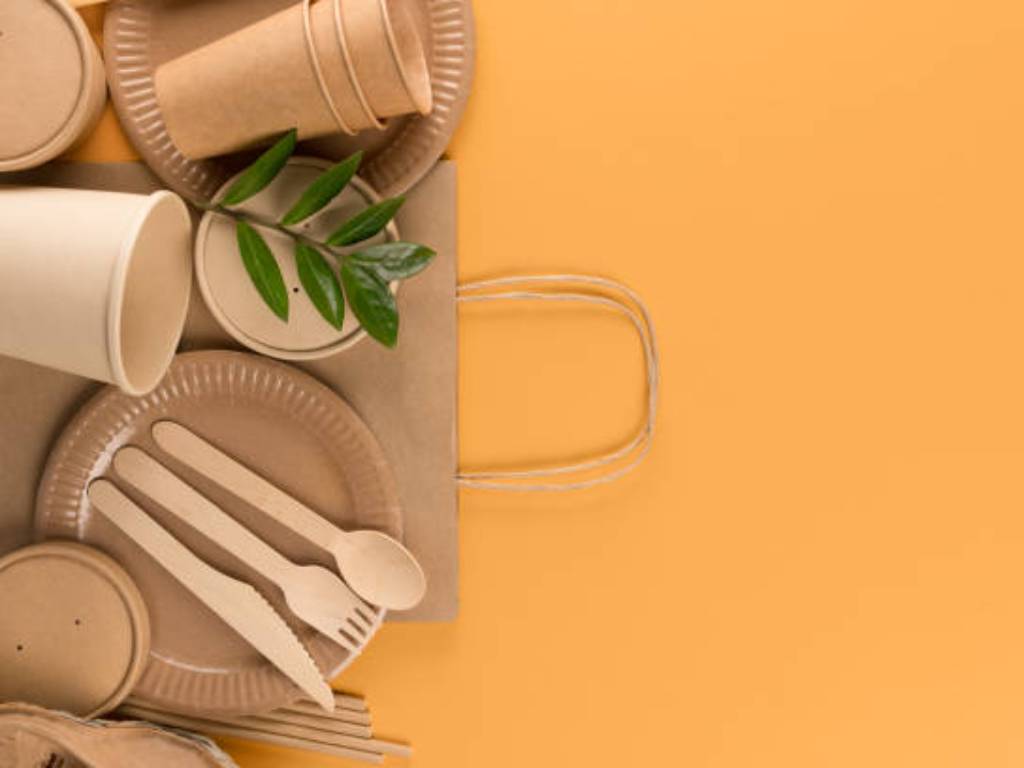
Paper packaging emerges as an exemplary selection for the takeaway and delivery food sector, harmonizing practicality, safety, and environmental consciousness. Its lightweight characteristic renders it exceptionally suitable for food transportation, thereby diminishing logistical expenses and curtailing ecological impacts. Owing to its relatively inert attributes, paper significantly reduces the probability of chemical transference to food items, thus safeguarding consumer health. Predominantly, in light of escalating ecological apprehensions, the biodegradable and recyclable nature of paper packaging aligns seamlessly with the aspirations of both consumers and food industry stakeholders, including food manufacturers, committed to reducing their carbon footprint and environmental stewardship. This attribute positions paper as a progressively favored option within the takeaway realm, where single-use packaging predominates. It adeptly addresses specific operational requisites while concurrently minimizing the environmental footprint associated with the food packaging supply chain and delivery services.
Yoonpak Offers Sustainable Paper Packaging Solutions

Yoonpak firmly establishes itself as a trailblazer in the realm of sustainable food packaging, unveiling a comprehensive collection replete with innovative, fully recyclable, and carbon-neutral solutions for takeaway containers. Our diverse range features an array of cutting-edge designs, spanning from custom-printed packages to versatile brown kraft paper containers, all expertly crafted from environmentally benign, plant-based materials such as sugarcane and Forest Stewardship Council (FSC)-certified paper fibers. These materials are judiciously chosen not only for their minimal ecological footprint but also for their adherence to stringent health standards, conforming to the guidelines of the Food and Drug Administration (FDA) and the German LFGB, thereby guaranteeing the absence of bisphenol A (BPA), non-toxicity, and their unerring suitability for direct food contact.
In our relentless endeavor to enhance environmental sustainability, Yoonpak has been at the forefront of incorporating biodegradable Polylactic Acid (PLA) into our Polyethylene Terephthalate (PET) cups, derived from renewable resources like cornstarch. Yoonpak embodies the synthesis of functional excellence, superior quality, and a deep-seated commitment to ecological responsibility in the sphere of food packaging. This dedication is further bolstered by our advanced digital ordering system, efficient dispatch processes, and unparalleled customer service, cementing our status as the premier purveyor of holistic and eco-conscious food packaging solutions.
Conclusion
You know, plastics are super popular because they’re cheap and versatile, making up about 30% of what’s out there. But here’s the catch: they’re a real headache for Mother Nature since they don’t break down easily. On the flip side, we’ve got paper-based options picking up steam. They’re kinder to the planet, but there’s a but… They often need extra layers to keep things fresh.
Now, this is where it gets tricky. Both manufacturers and us, the shoppers, have to really think hard about what we’re using. We’ve got to weigh up keeping our food safe against what’s best for the environment. And this isn’t just small talk – these choices are key to pushing the world towards greener, more earth-friendly packaging. It’s all about finding that sweet spot, right?







